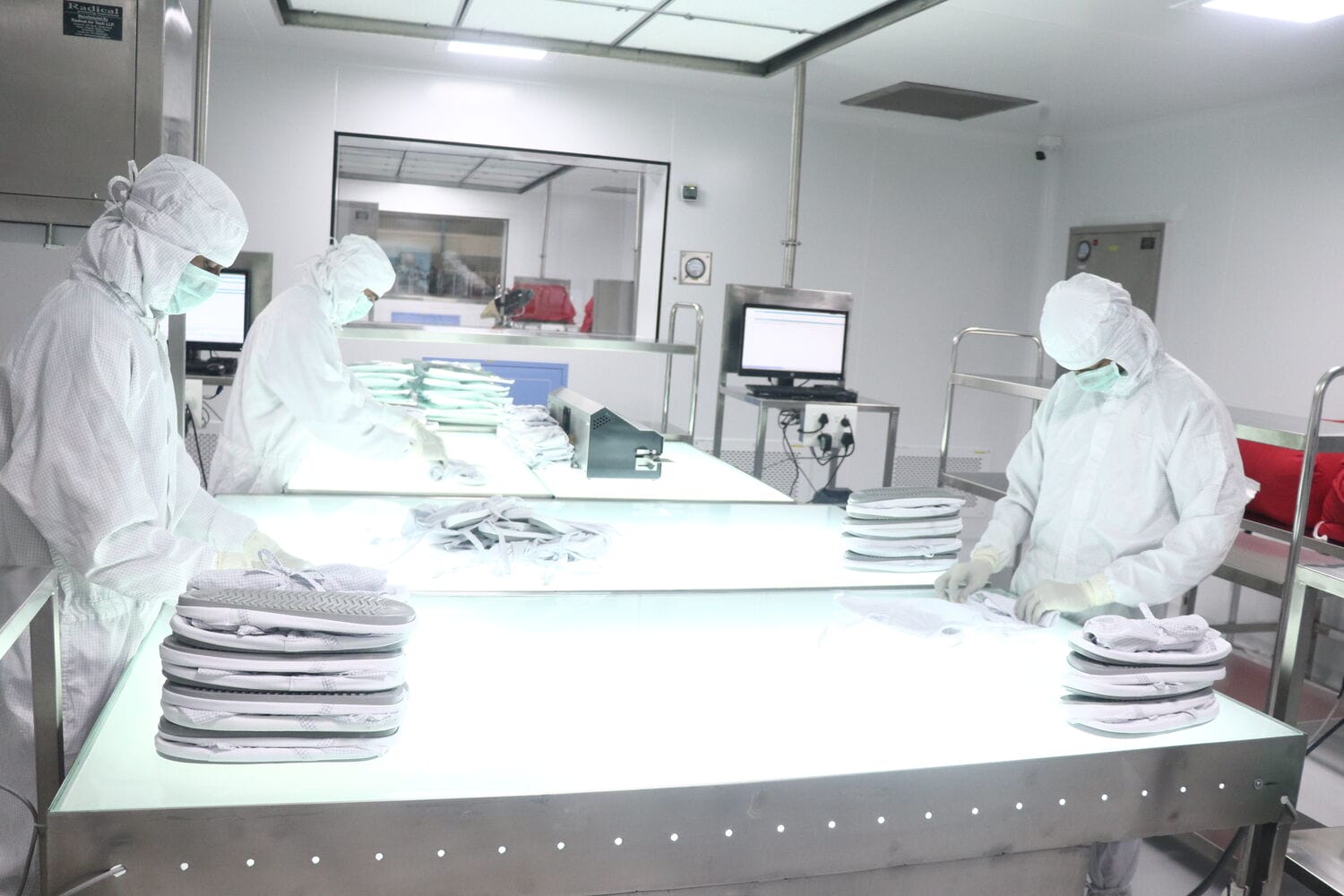
How to choose the right cleanroom gown for your needs?
Choosing the right cleanroom gown is not just a compliance task. It helps protect your process, your people and your product. Cleanroom gowning plays a key role in contamination control, comfort and cost-effectiveness.
This guide helps you navigate cleanroom gown selection step by step. Whether you’re in pharmaceutical production, electronics assembly or another contamination-sensitive industry, you’ll find practical advice you can act on right away.
1. Start with your cleanroom classification
Cleanroom gowns are not one-size-fits-all. Before choosing any garment, identify the classification of your cleanroom. This is based on ISO standards (like ISO 5 or ISO 8) or EU GMP grades (such as Grade B or Grade D).
For example, sterile pharmaceutical processes in Grade B environments require more robust gowning than activities in Grade D. Your cleanroom grade determines gown material, coverage level and change frequency.
If your classification is unclear, talk to a cleanroom textile expert. They can help you match garments to the right environment.
2. Know your options: disposable or reusable
Disposable gowns are typically used for short-term or high-risk tasks. They’re easy to use but create more waste and ongoing cost.
Reusable gowns, when maintained through validated cleanroom laundry systems, offer a long-term solution. They can be tracked, repaired and managed for consistent cleanliness. Services like Lindström include RFID tracking, scheduled laundry and garment lifecycle monitoring.
Reusable options are particularly useful for companies working toward sustainability goals or managing large teams.
3. Choose materials and features that fit your process
Gown material affects both protection and comfort. A common choice is polyester with conductive fibres, which reduces static and particle release.
Look for these useful features:
- Elastic cuffs and secure closures
- Sealed seams or integrated hoods if needed
- Lightweight fabric that stays breathable during long shifts
Gowns that fit well and feel comfortable can improve compliance. If employees are uncomfortable, proper gowning becomes harder to maintain.
4. Match the gown to your activity
Different tasks create different contamination risks. For example, powder handling or aseptic filling requires more coverage than assembly or inspection.
Here’s how to match:
- High-particle work: look for multilayer garments with full coverage
- Precision tasks: select ergonomic designs that allow mobility
Gown selection should consider daily workflows and comfort in real conditions, not just technical specs.
5. Use the right support tools
Use tools and feedback to guide your gowning strategy. Consider:
- Cleanroom classification and gowning matrix
- Guidelines such as EU GMP Annex 1
- Feedback from gown users during trials
- Support from textile service providers
Cleanroom garment tracking software can help you stay organised and compliant. It lets you track garment usage, reduce waste and ensure the right items are always available.
6. Include sustainability in your decision
If your organisation values environmental impact, review the full gown lifecycle. Ask about:
- Laundry water and energy efficiency
- Repair and reuse rates
- Recycling programmes for worn-out garments
Lindström, for example, offers a circular model that extends garment life and reduces waste. A sustainable choice does not mean compromising on cleanliness or quality.
7. Avoid common gowning mistakes
Here are some missteps to watch for:
- Buying gowns that aren’t cleanroom-certified
- Choosing based only on unit price
- Skipping feedback from people who wear the gowns
- Ignoring trial results in your actual environment
Each of these can affect contamination control or drive up hidden costs.

FAQ – Frequently asked questions
Yes. When processed through validated cleanroom laundry services, reusable gowns maintain their barrier properties across multiple uses. RFID tracking helps ensure timely replacement.
Look for gowns qualified for particle retention and tested for maximum wash cycles. A trusted cleanroom textile service should provide validation reports and garment tracking.
Yes. Most professional suppliers, including Lindström, offer wear trials to test fit, comfort and performance in your actual cleanroom setting.
Grade B requires full coverage with materials validated for sterile use, while Grade D may allow simplified garments. Always match gown types to cleanroom classification and task.
Switching to a reusable gown programme with repair and recycling options helps reduce landfill waste and supports sustainability targets.



